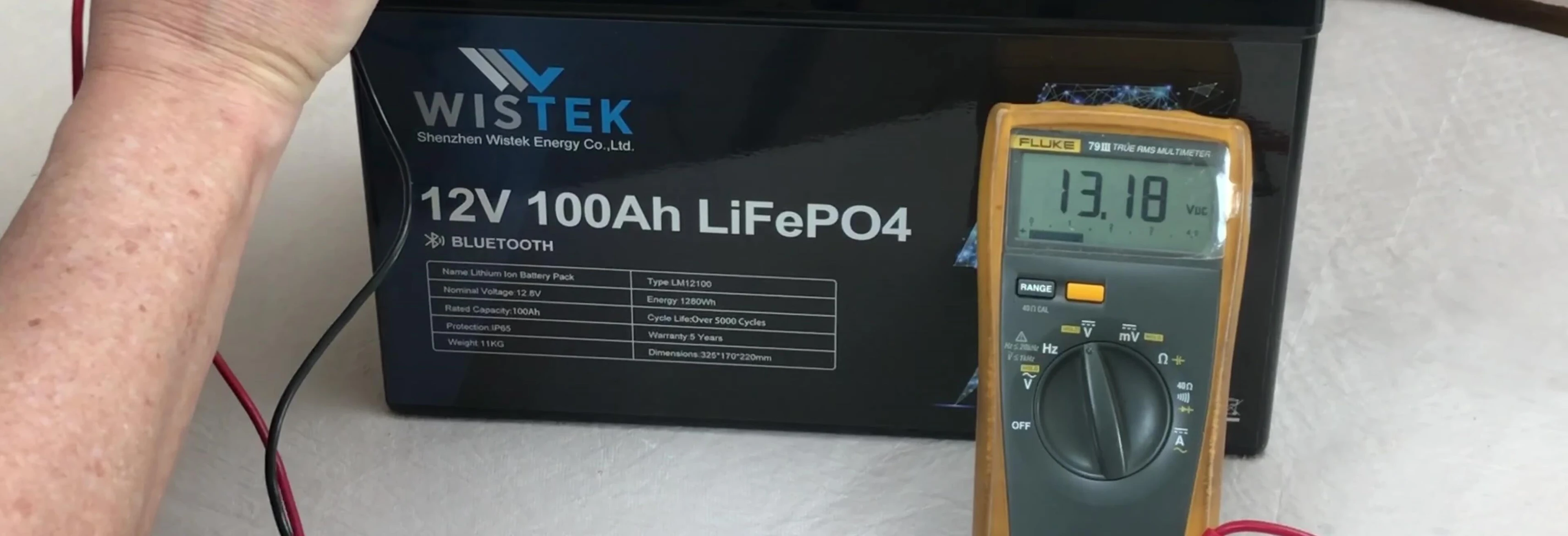This review delves into the performance and features of the Wistek 12V 100Ah LiFePO4 battery, a group 31 sized battery boasting a 5-year warranty and a claimed 5000-cycle lifespan. We put this battery through rigorous testing, evaluating its charging capabilities, discharge capacity, and crucial safety features like low-temperature and overcurrent protection. Our assessment covers real-world usage scenarios and incorporates data collected via the battery's integrated Bluetooth app for precise monitoring and analysis.The testing encompassed a range of scenarios, from controlled discharge tests to high-power load simulations, allowing for a comprehensive evaluation of the battery's performance against its advertised specifications. We also explore the user experience, including the ease of use of the accompanying app and the overall build quality. This review concludes with an assessment of the Wistek 12V 100Ah LiFePO4 battery's value proposition, determining if it lives up to its promises and stands as a competitive option within the LiFePO4 market.
Pros And Cons
- 5-year warranty
- 5000 cycles
- IP65 waterproof
- Bluetooth connectivity
- Met advertised capacity (101 amp hours, 1280 watt-hours)
- Low temperature cut-off protection
- Overcurrent protection (OCP)
- Package did not include a manual
- Low temperature cut-off temperature not explicitly stated
Read more: OUKITEL P2001 PLUS Review: Best Budget Portable Power Station?
Unboxing and Initial Inspection
The Wistek 12V 100Ah LiFePO4 battery arrived well-packaged. Initial inspection revealed a sturdy build quality with protective cap covers. The battery is a group 31 size, and the initial voltage reading of 13.18V indicated a healthy charge.
The included Bluetooth functionality is a notable feature. Connecting via the app, I confirmed the voltage and other parameters—a good start for a tech-savvy user.
The battery boasts a 5-year warranty and a 5000-cycle lifespan. These are key factors influencing its long-term value proposition.
Charging Performance and App Functionality
The charging process was monitored via the Bluetooth app. The app seamlessly integrated with the battery, providing real-time data on voltage, current, temperature, and state of charge.

During charging, 23.2 Amps at 315 Watts was recorded, with an estimated charging time just under 2 hours. The app proved easy to use, offering a convenient way to track the battery's health.

The absence of a physical manual was slightly disappointing, although the online documentation compensated for this deficiency.
Capacity Test and Discharge Performance
A discharge test was conducted using a light bulb setup to simulate a load. Initial testing showed around 38 Amps with three bulbs, drawing 500 Watts. This was later reduced to around 13 Amps and 166W for a more controlled capacity test.

The test results showed a discharge of 101 Amp-hours and 1280 Watt-hours, aligning with the battery's advertised capacity. This suggests that Wistek accurately represents its product specifications.

The discharge test showed robust performance, confirming the battery's advertised capacity and demonstrating its suitability for various applications.
Low Temperature Protection Test
The low-temperature cutoff feature was tested by placing the battery in a freezer. The battery stopped charging at approximately 31.5°F (-0.3°C), demonstrating the effectiveness of the temperature protection mechanism.

Once warmed to 40.8°F (4.9°C), the battery resumed charging, proving that the low-temperature cut-off is functional and responsive to temperature changes.

This test highlights a crucial safety feature, indicating that the Wistek battery has effective built-in protection against damage caused by extreme cold.

High Discharge Current Test and Overcurrent Protection
A high-discharge current test was conducted using a high-power induction cooktop. Initially, a load of 121 Amps (1500 Watts) triggered the overcurrent protection (OCP) mechanism.

Subsequently, testing with a load of approximately 106 Amps (1300 Watts) was sustained for 5 minutes without triggering the OCP. This illustrates a balance between high-power delivery and safety features.

The OCP, which is an important safety feature, activated appropriately during the high-current tests, preventing potential damage to the battery.

Conclusion
The Wistek 12V 100Ah LiFePO4 battery impressed with its performance, features, and build quality. The capacity matched its advertised specifications, and the Bluetooth app offered excellent control and monitoring.

The low-temperature protection and overcurrent protection features enhance safety, and the robust construction and 5-year warranty provide confidence in its longevity.
Overall, the Wistek battery provides great value for its price point, making it a strong contender in the LiFePO4 market. It’s a recommended choice for those seeking a reliable and feature-rich group 31 battery.
